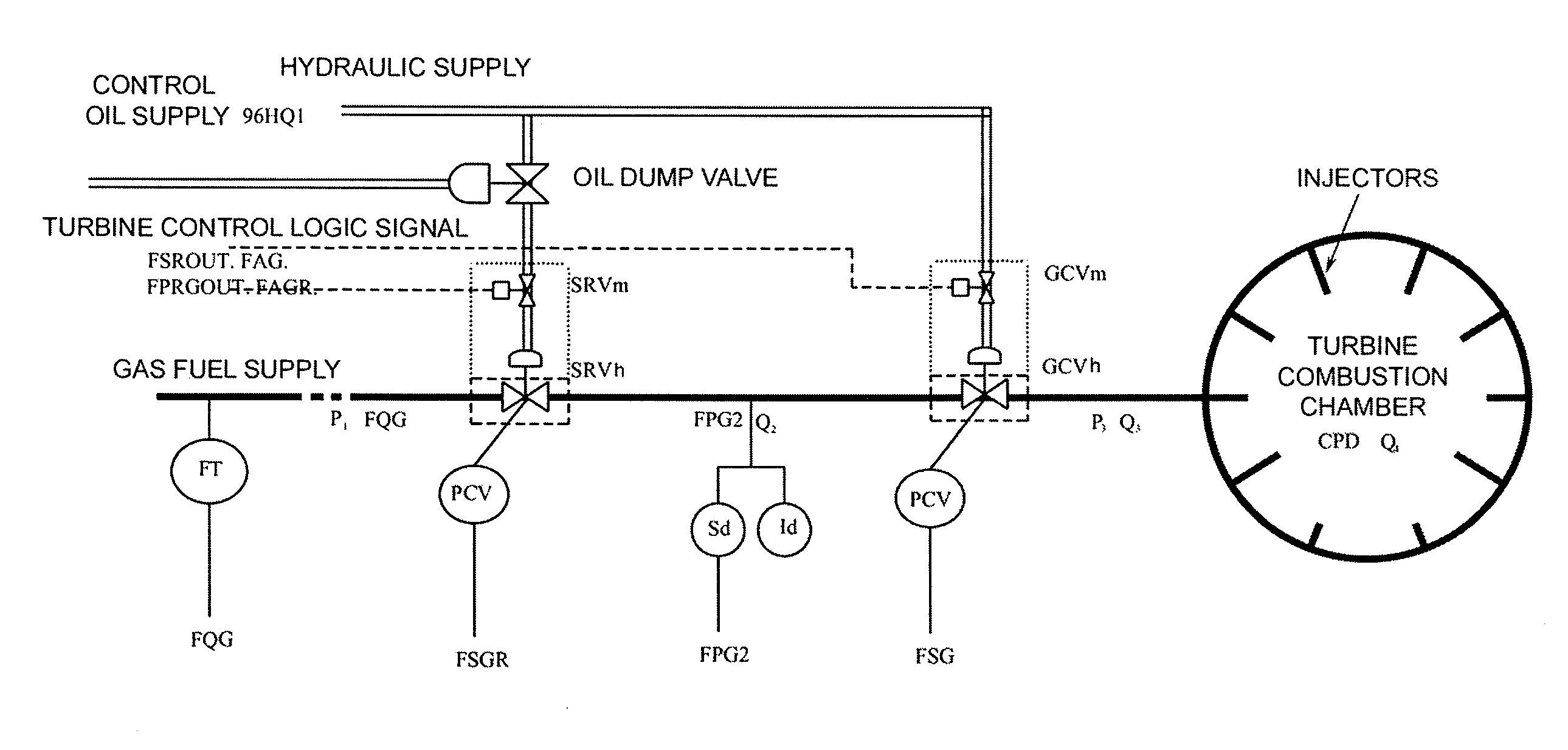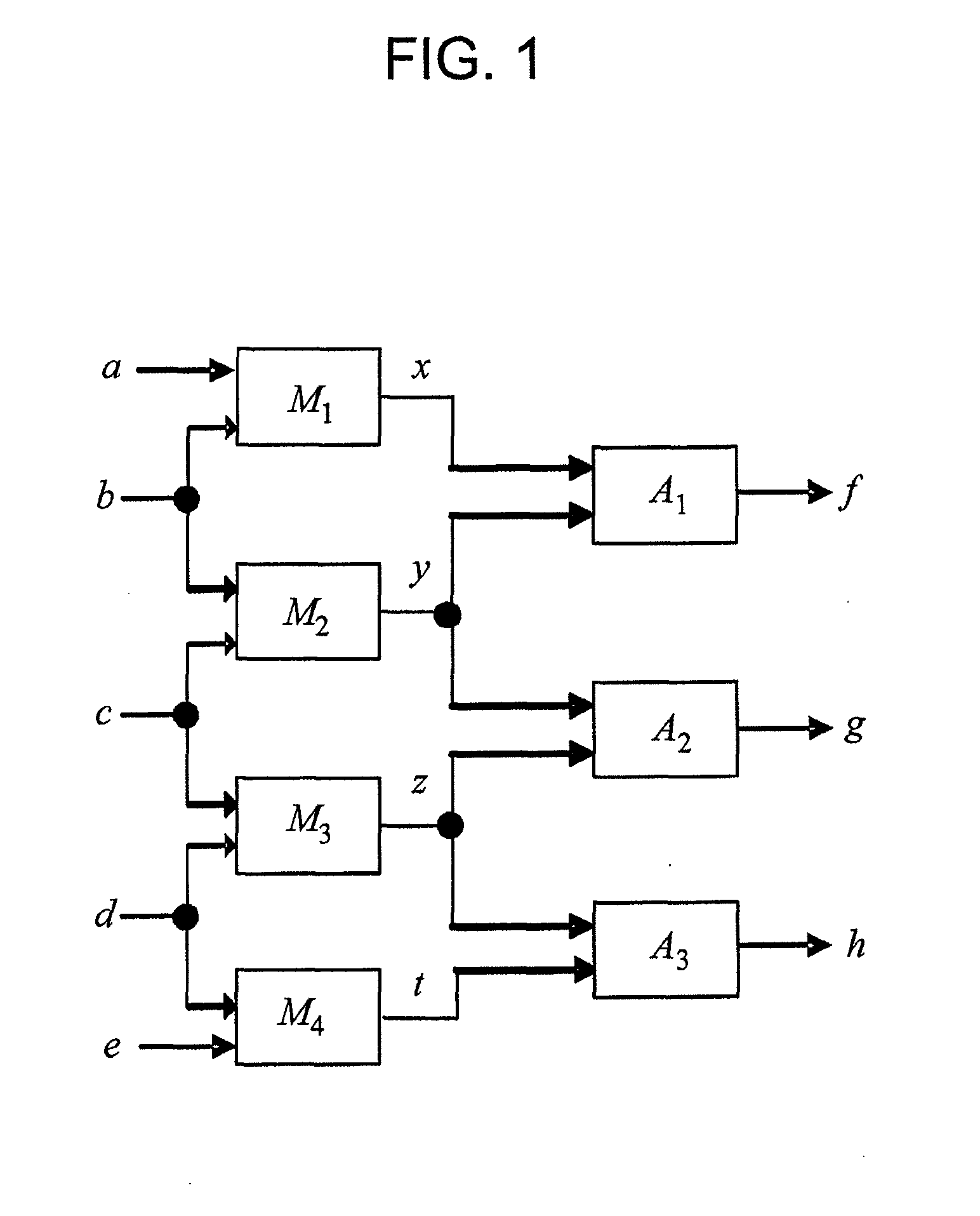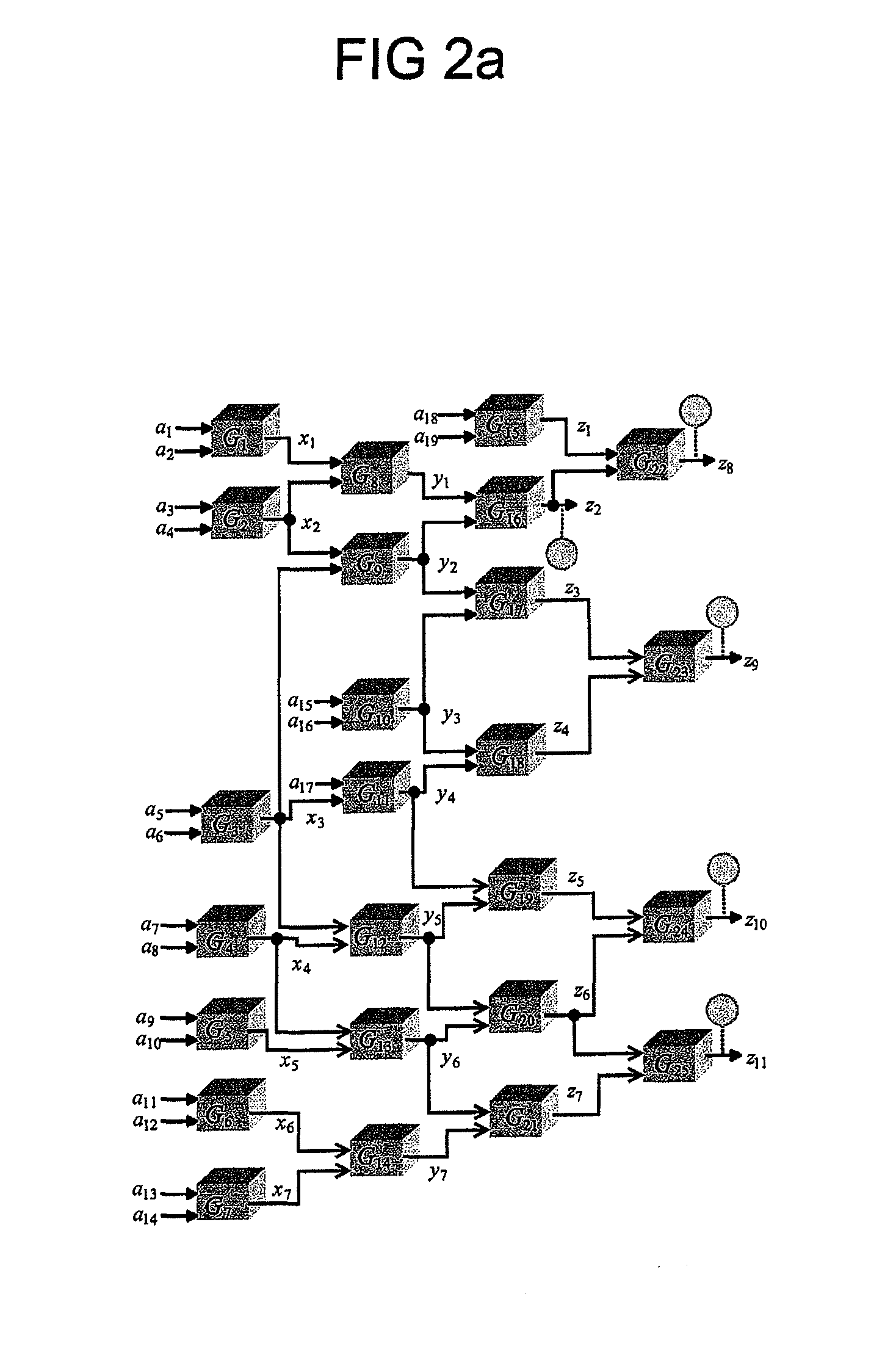Method for generating a minimum set of analytical redundancy relations for the diagnosis of systems
a technology of analytical redundancy and system diagnosis, applied in the field of system diagnostics, can solve the problems of faulty arr derivation, arr not satisfied, least one of the components of the support set of the arr, etc., and achieve the effect of enhancing the computational efficiency of the method of diagnosis and enhancing the accuracy of evaluation
- Summary
- Abstract
- Description
- Claims
- Application Information
AI Technical Summary
Benefits of technology
Problems solved by technology
Method used
Image
Examples
application examples
[0101]To demonstrate the above described method, we present in the following examples of application in two synthetic systems and in a real one.
Multiport Combinational Circuits
[0102]A check of the performance of the method subject of the invention was conducted by way of example on the circuit structures shown in FIG. 2a and in FIG. 2b, which show two schemes of combinational circuits which include adders and multipliers with a connectivity which is more complex than the system of FIG. 1.
[0103]The FIG. 2a shows a system with 25 components in which 5 sensors are deployed at the exits z2, z8, z9, Z10, Z11.
[0104]The total number of ARRs for the system is 484. By applying the method subject of the invention it is possible to derive a minimal set of ARRs for single fault diagnosis of the system having a numerosity of 6, and a minimal set of ARRs for double-fault diagnosis having a numerosity of 17.
[0105]The FIG. 2b shows a system with 35 components in which 6 sensors are deployed at outp...
PUM
 Login to View More
Login to View More Abstract
Description
Claims
Application Information
 Login to View More
Login to View More - R&D
- Intellectual Property
- Life Sciences
- Materials
- Tech Scout
- Unparalleled Data Quality
- Higher Quality Content
- 60% Fewer Hallucinations
Browse by: Latest US Patents, China's latest patents, Technical Efficacy Thesaurus, Application Domain, Technology Topic, Popular Technical Reports.
© 2025 PatSnap. All rights reserved.Legal|Privacy policy|Modern Slavery Act Transparency Statement|Sitemap|About US| Contact US: help@patsnap.com



